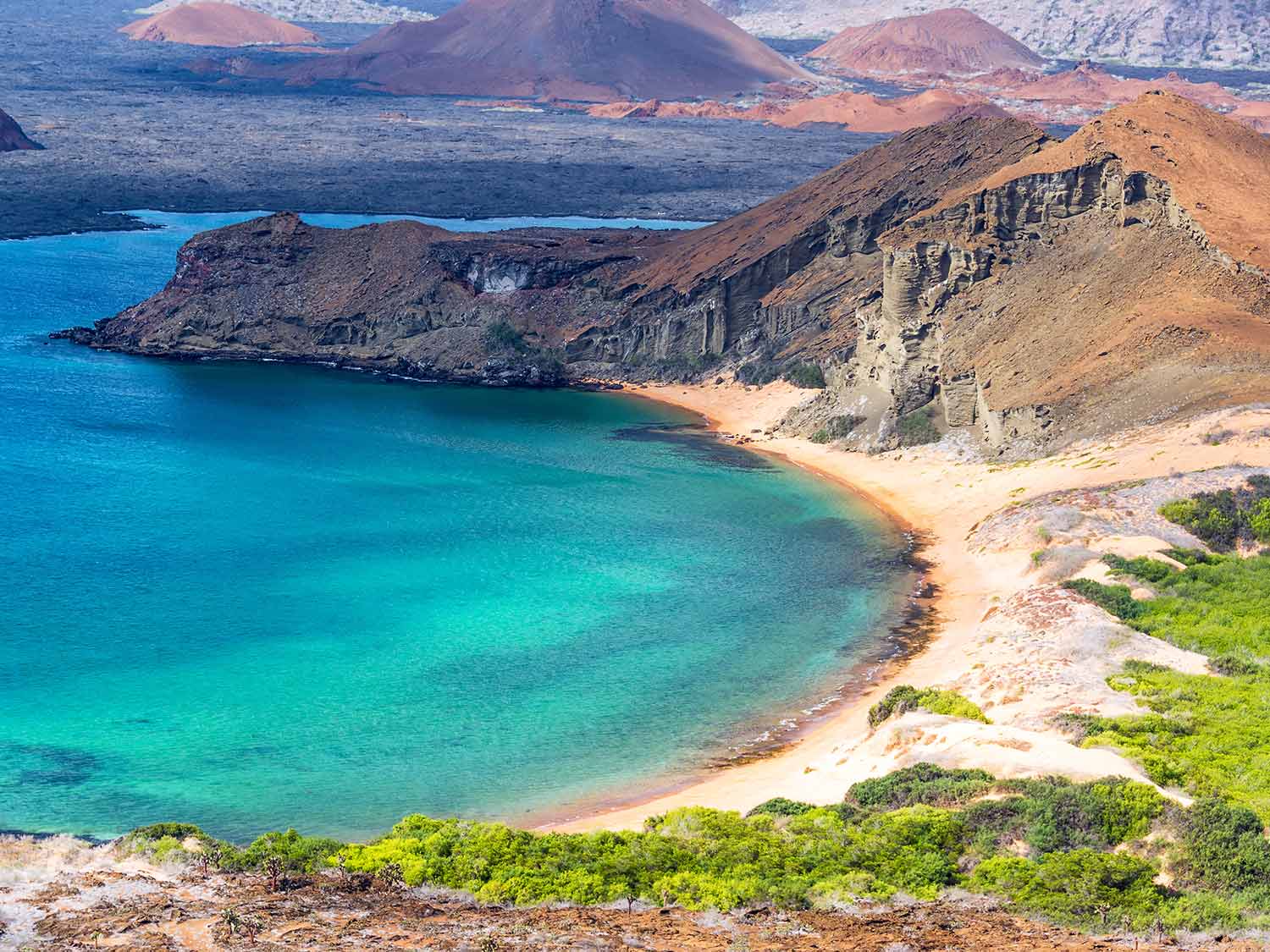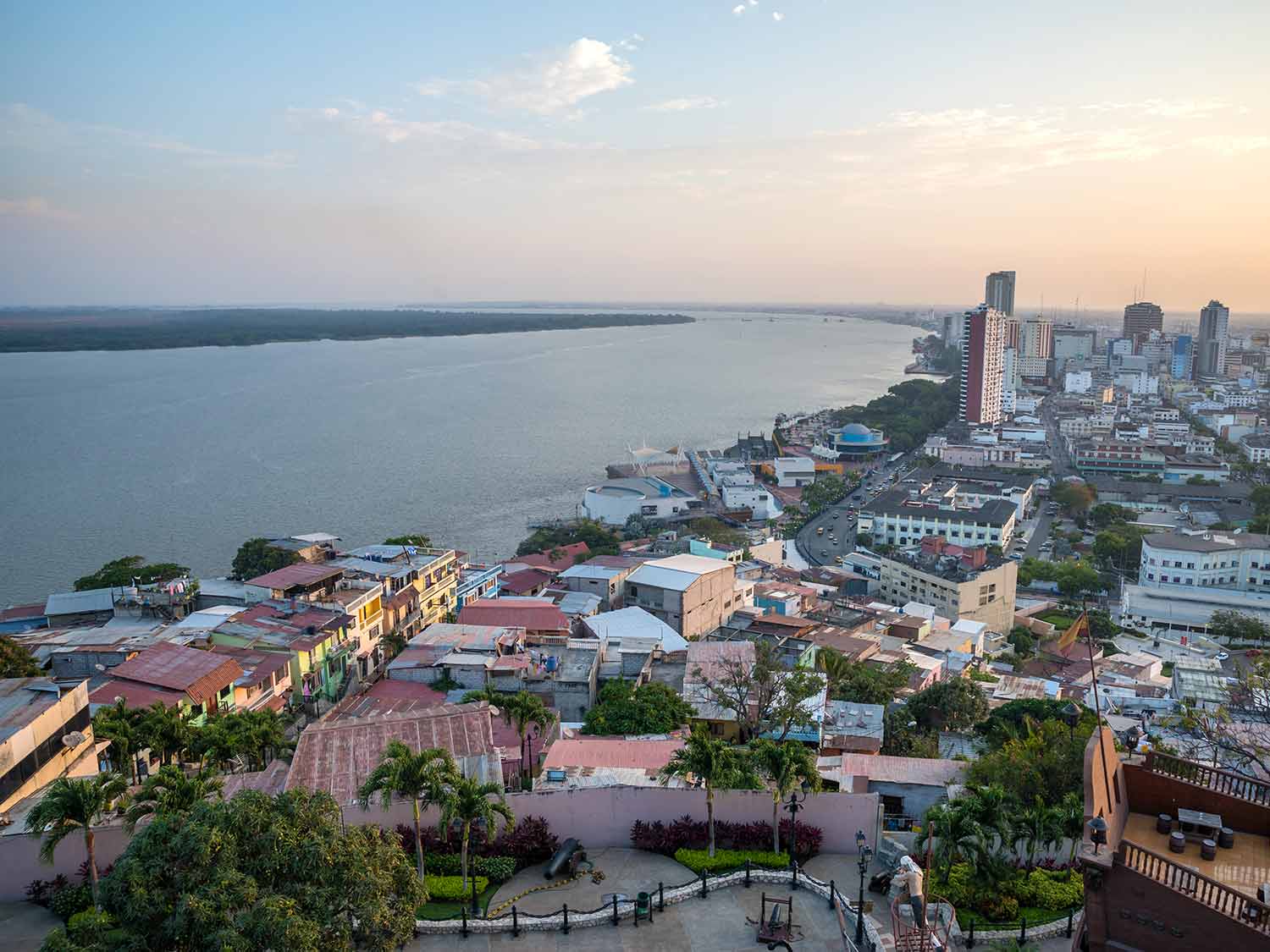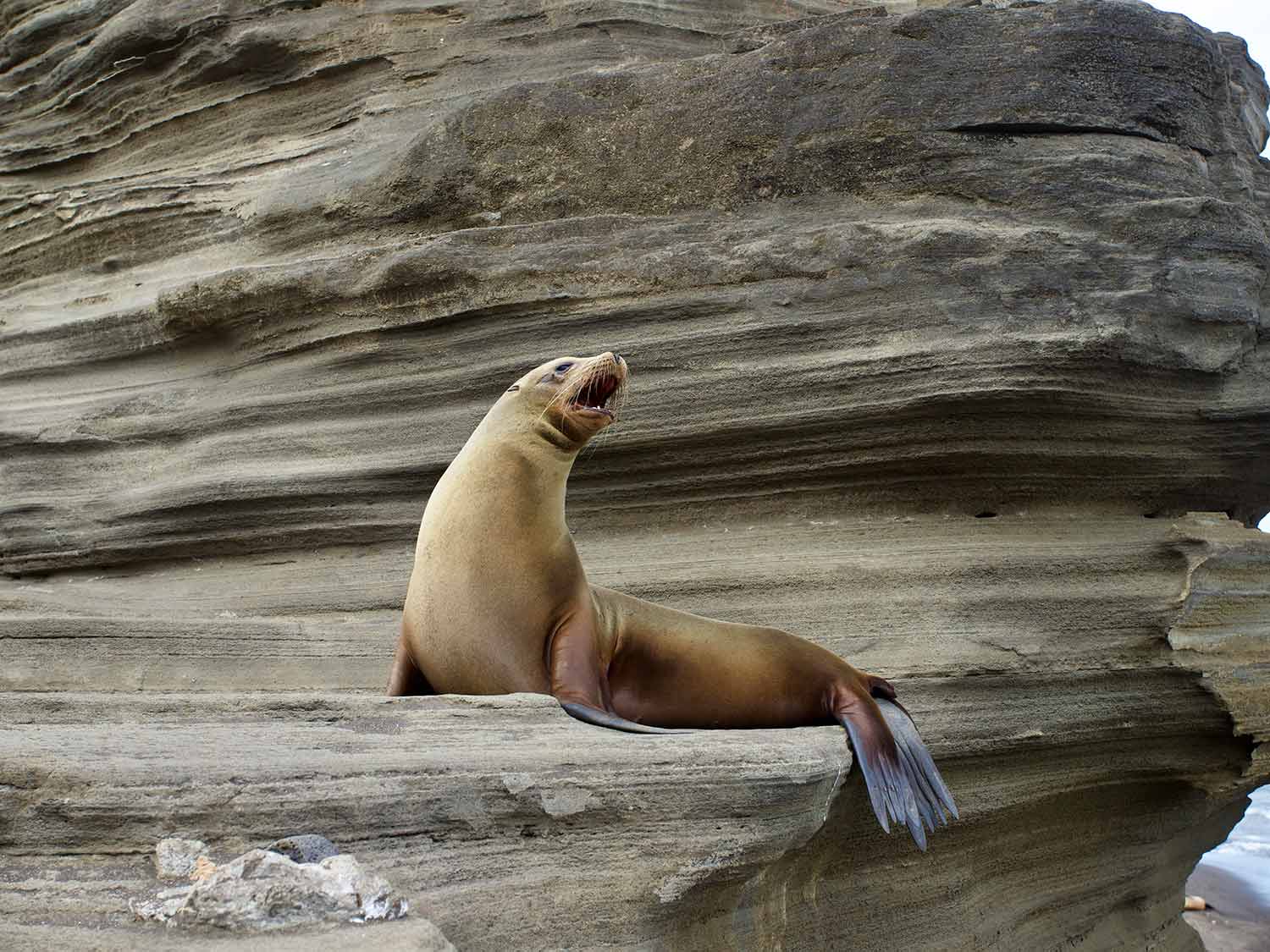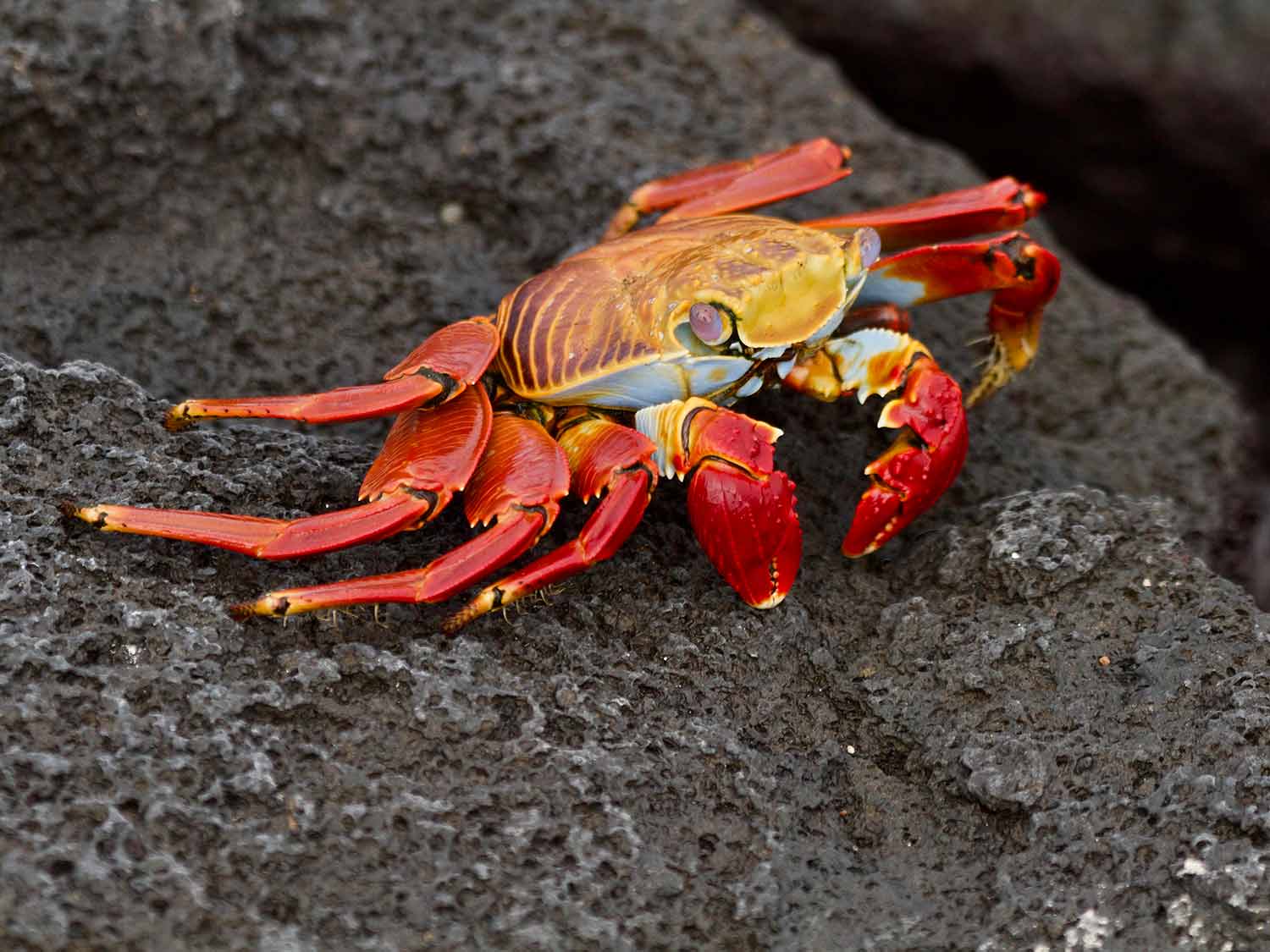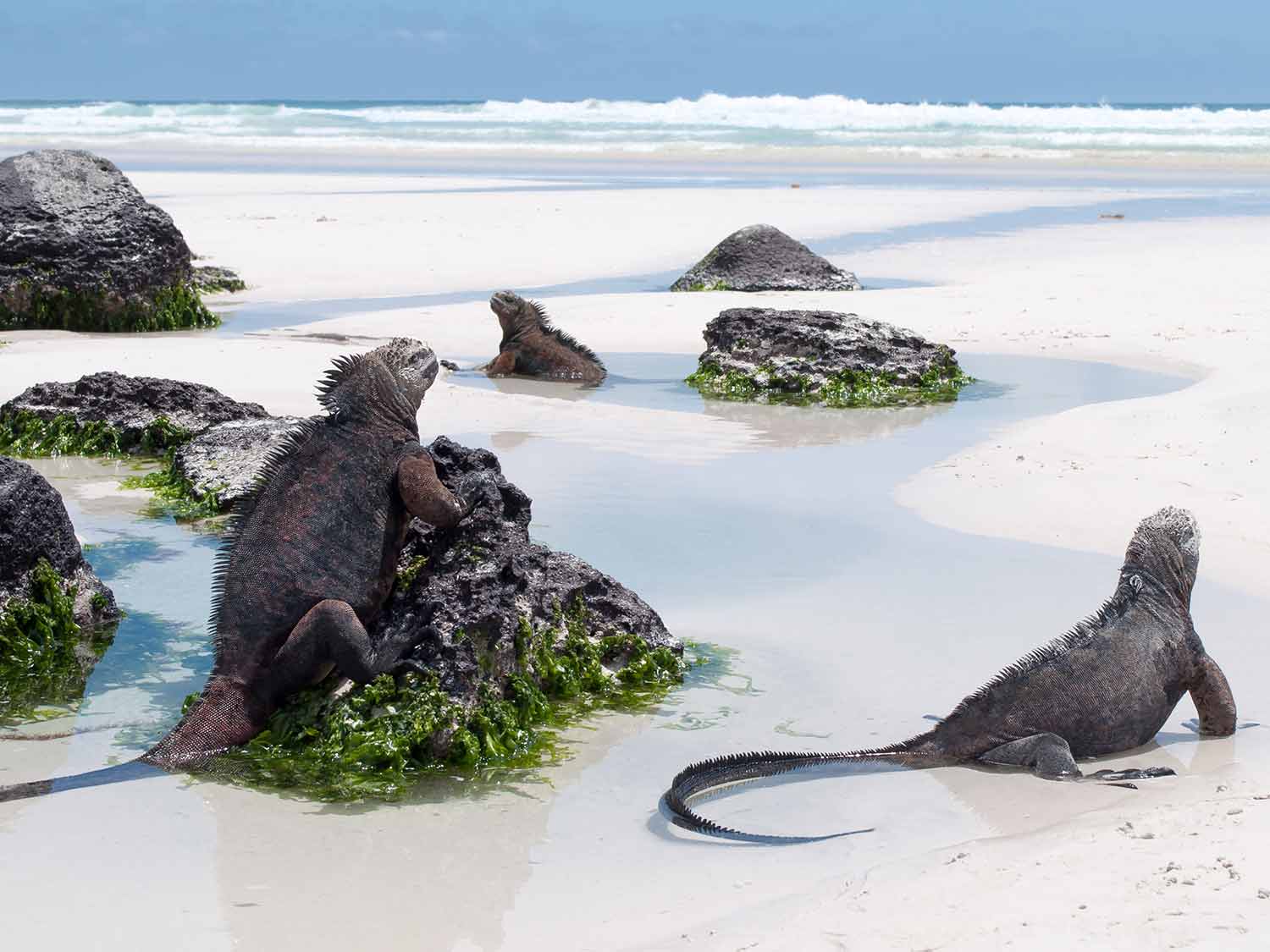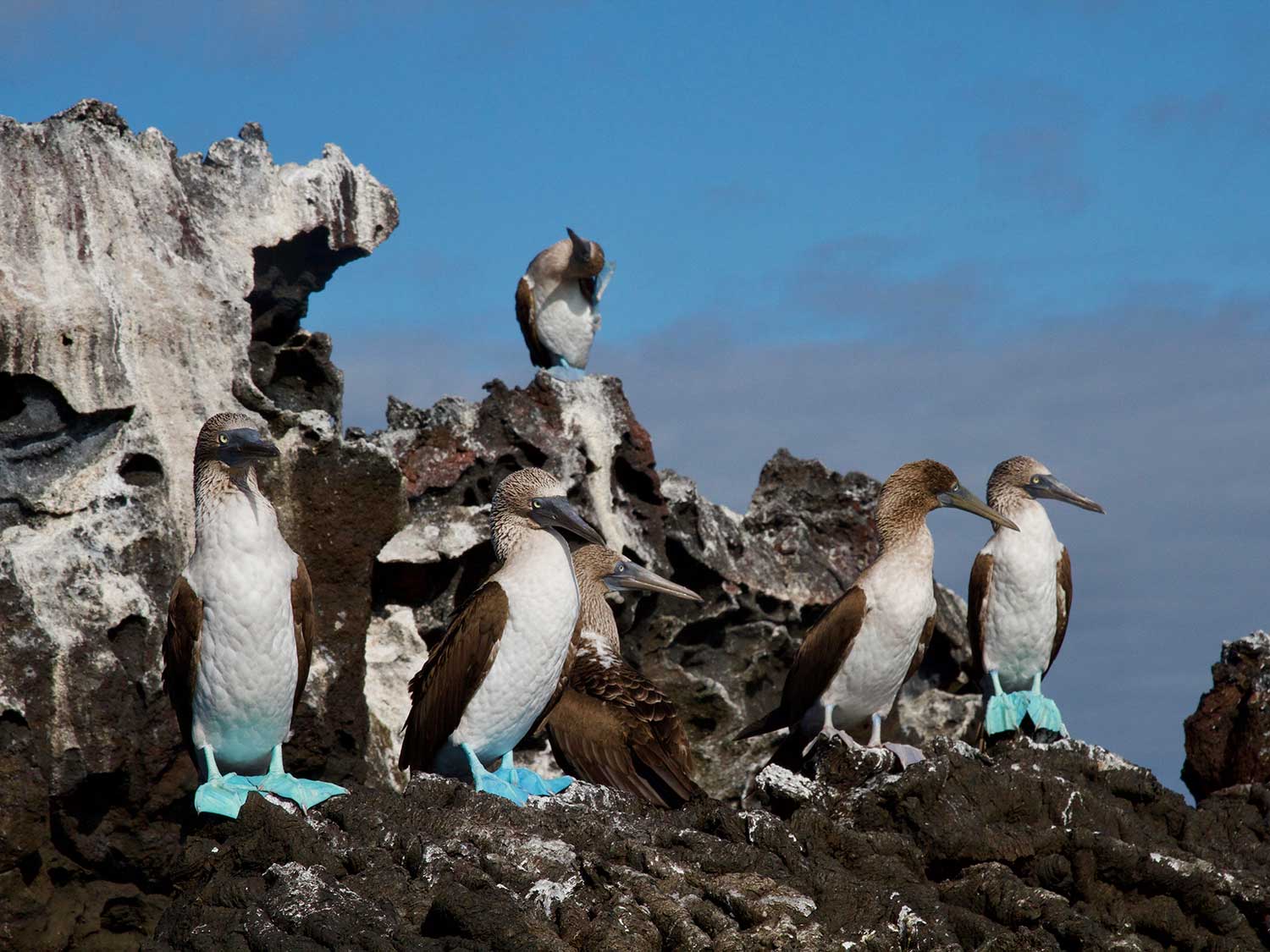The Galapagos Islands Are Still The Destination Of A Lifetime
More accessible than ever, this bucket list experience remains one of the most unique and fulfilling.
Charles Darwin spent just six weeks in the Galápagos Islands in 1835, but his time there changed the world and how we think about it. And, while it didn't happen overnight, Darwin's "Origin of Species" and the debate it launched, in turn, launched the Galápagos high on a list of must-see destinations in our lifetime.
Located about 850 miles west of the coast of Ecuador, the Galápagos Islands, in general, lie less than one degree south of the Equator. Of the roughly 350 islands and islets, only 16 are inhabited. About 97 percent of the land mass is a national park and UNESCO World Heritage site.
Here's something important to consider when planning your trip to the Galápagos Islands: most of the land mass is a national park and to enter the national park, visitors must be accompanied by a licensed naturalist. So, you either book multiple tours from land or, more simply, book a cruise as we did with Latin Trails on the Sea Star Journey, a 16-passenger first class yacht.
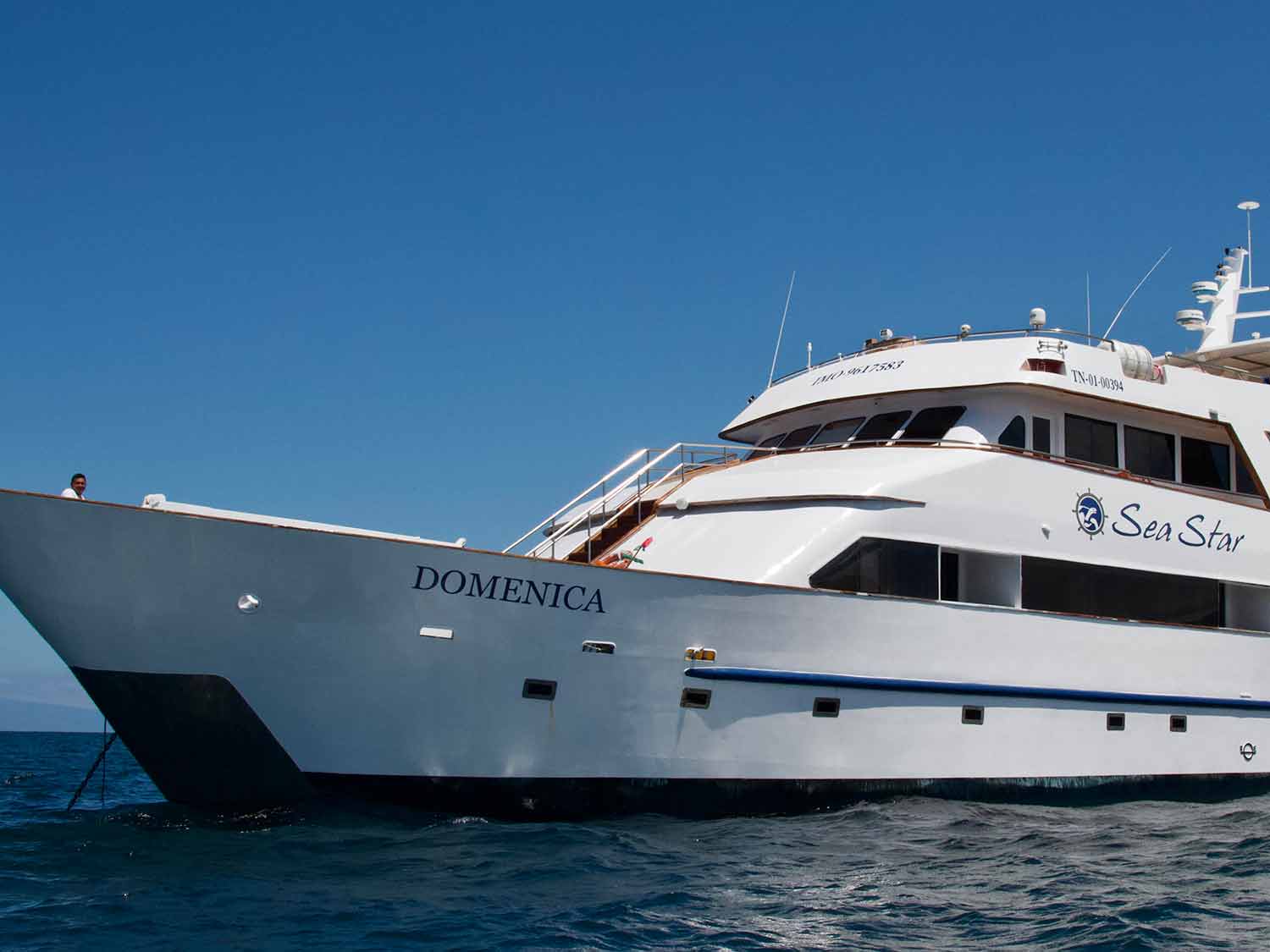
Latin Trails offers three itineraries through the Galápagos: a Northern Route, Southern Route and Western Route. We chose the five-night, six-day Southern Route, which starts at $4,649.
However, if you choose to stay on land each night, Latin Trails also offers snorkeling and other outings from Santa Cruz on the Galápagos Hopper.
Fast Facts
Country: Ecuador
Passport Needed? Yes, but no visa required.
Money Matters: The U.S. dollar is the official currency. A $100 entry fee for the national park must be paid in cash before boarding the flight to the Galápagos. Another $20 carbon offset tax must be paid in cash as well. Many businesses in the Galápagos do not take credit or debit cards.
Official Language: Spanish
When to Go: There's not a bad time to go to the Galápagos. Even the rainy season of December through February provides lots of sun. Rain showers for a few hours each day rarely interrupt activity.
Scuba divers often prefer the Whale Shark Season, which is June through November. But the water is warmer during the manta ray season, which is December through May.
In general, October to July, the seas are calmest and sea-lion pups are the most playful. However, we visited in December and one day a sea lion pup jumped in our little raft as we explored his neighborhood. In six days, it rained only once and that was overnight.
Seriously, there's not a bad time to visit the Galápagos.
Tip: Most flights from North America arrive in Quito late in the evening and you have no time to explore Ecuador's capital. Book a night or two at Latin Trail's owned Illa Hotel and arrange for a tour of the city before your very early morning departure to the airport.
Day 1
From Quito, Ecuador, fly to Guayaquil and on to Baltra International Airport in the Galápagos. You'll pass through a security check point entering the island to ensure you're not bringing some invasive or non-endemic plants or animals to the islands. Latin Trails representatives will meet you at the airport for a quick transfer by taxi and boat over to Puerto Ayora on Santa Cruz Island.
Get settled into your room on the Sea Star Journey, then enjoy a quick lunch before heading out to see giant tortoises, flamingos and mangrove forests at the Charles Darwin Research Project.
Learn about Lonesome George and other giant tortoises, as well as the daily work to restore these thousand-pound land mammals to their natural environment.
Day 2
Isabela Island is home to six volcanoes, including Sierra Negra. Today's shore excursion includes a morning drive into the highlands followed by a hike to the volcano's edge. It's dusty here in dry season and muddy if rain has fallen, so bring plenty of water and dress appropriately.
This afternoon includes a stop in Puerto Villamil, where sea lions make themselves at home on park benches, playground equipment and all along the sidewalks of this little village. The guides tell you to keep your distance, which you should, but they are simply everywhere. Still, keep your distance and don't worry about getting a selfie with a sea lion.
Day 3
Get an up-close view of Galápagos penguins and flightless cormorants on a dingy ride around Punta Moreno. Marine iguanas, sea lions and Sally Lightfoot crabs all compete for space on the rocky outcroppings.
The shore excursion this day requires close-toed walking shoes or hiking boots if you've brought them. You may also benefit from using a hiking stick, available on the Sea Star Journey. The volcano rock here is fresh, meaning it's about three million old, so it is sharp, uneven and somewhat difficult to walk on. Watch your step as you hike about a mile back to Darwin's Lake where flamingos and other colorful birds make their home.
Day 4
The hike around Fernandina Island allows you to learn about the type of cactus and other vegetation on the Galápagos' southern islands. This is where you'll see lots of land birds and the many finches that Charles Darwin recorded. Bring your binoculars and a quick eye. These birds are masters at disguising themselves in the leaves.
Tagus Cove is another area to explore on foot. We watched as two male marine iguanas literally wrestled each other in a display of territorial domination. While iguanas often butt heads, the wrestling match here even surprised our naturalist with its intensity.
As with every day, bring water on these shore excursions and a hiking pole to keep you sure footed on uneven terrain.
Day 5
Start the day with a dingy cruise around Buccaneer Cove on Santiago Island. You'll see some interesting rock formations and enter a little water cave. As with many stops, the blue-footed boobies, fur seals and sea lions make themselves at home on the rocks.
A late morning snorkeling outing is an option here. This is a good place to see rays and colorful tropical fish.
After lunch on the ship, next stop is Puerto Egas and a magnificent black sand beach on Santiago Island. This is one place where you might want to bring your hiking boots, if you have them. After a wet landing, some of hiking territory covers rough and jagged lava formations. You may also wish to bring a hiking stick available on the Sea Star Journey.
